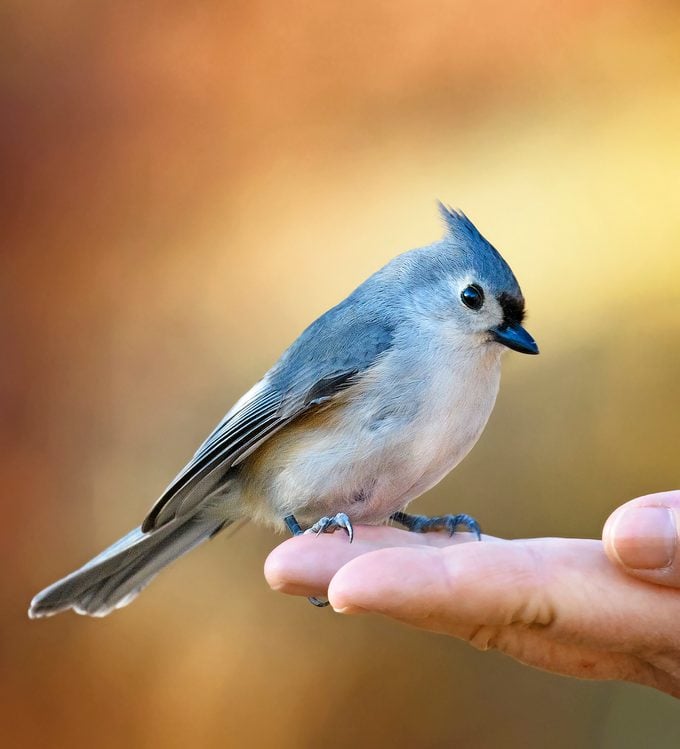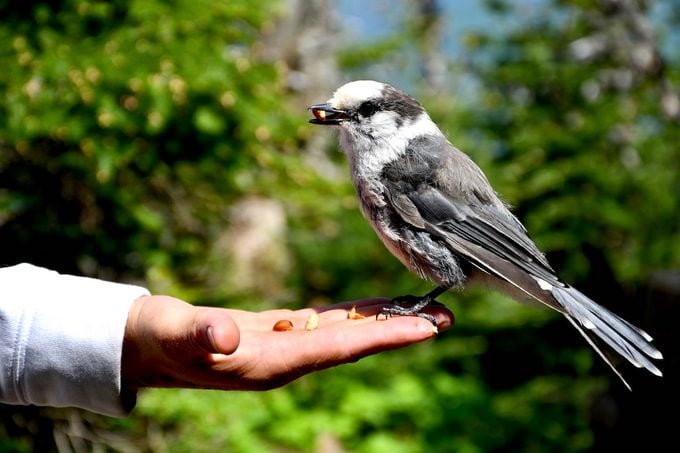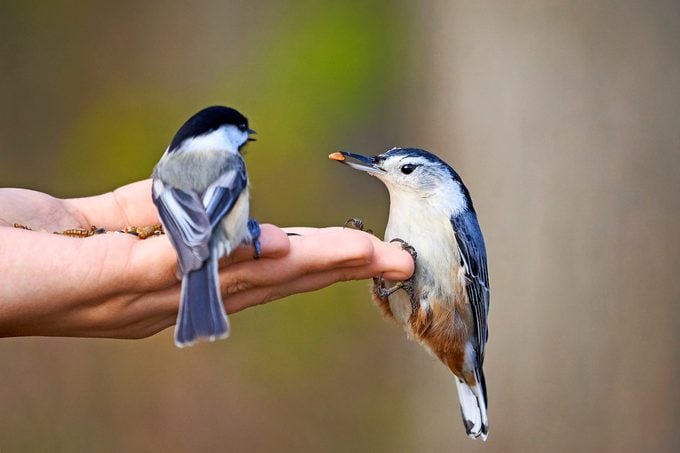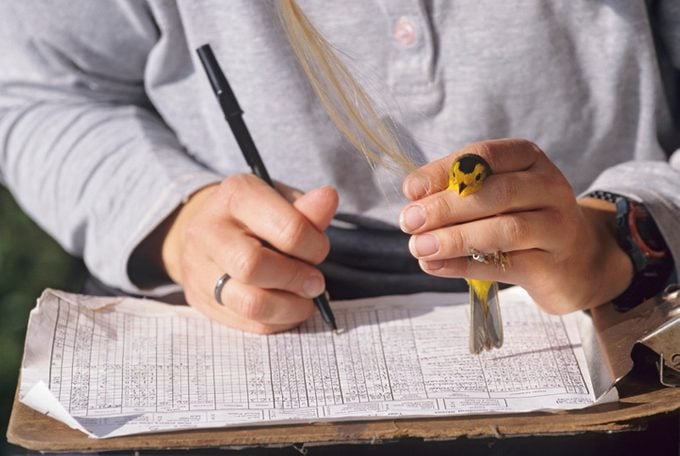Hand Feeding Birds: How to Do It Safely
Updated: Jan. 17, 2023
Here's what you should consider before hand feeding wild birds — and how you can do it safely. Plus get expert tips for using a hummingbird hand feeder.
Getting up Close With Birds

If you feed birds long enough, you’re almost certain to have a close encounter. Maybe a hummingbird zooms to the sugar-water feeder while you hang it up. Or perhaps a chickadee perches just above your head as you bring out a fresh batch of sunflower seeds. It’s only natural to wonder, Could I get these birds to eat out of my hand? The thrill of connecting with a wild bird is undeniable. For something so small, birds are intensely alive, especially when seen up close. And, with patience, many songbirds can be enticed to take seeds from your hands, but here are some things to think about before hand feeding birds.
Create a bird-safe backyard by following these tips.
Consider Safety First When Hand Feeding Birds

Consider whether it’s safe for the local birds to become tame around humans. If you have a large property and peaceful neighbors, wild birds that learn to trust people may not have any problems. But in other situations, it might be risky for them to become too friendly.
It’s important to remember that not everyone would appreciate being closely approached by a bird. Some people have serious phobias, and if a bird attempts to land on them, it could suffer dire consequences. For that reason, it’s unwise to try to tame wildlife on public property.
Some birds may become aggressive after overcoming their natural fear of people. On public beaches and in parks and ponds, many people feed ducks or gulls.
Large birds such as swans, geese and even sandhill cranes can become so acclimated to humans that they take food directly from people’s hands. This can lead to dangerous interactions where people are injured by big birds eagerly demanding food. Many spaces ban feeding animals under any circumstance, so be sure to learn the rules at your local parks.
Any time you come in contact with birds, be certain that your hands are clean—before and after. This includes touching birds, eggs, nests or feeders. Lotions, bug spray, sunscreen, oils or other substances on your hands can harm birds or their feathers. And it’s possible, although rare, for birds to pass diseases to humans.
Psst — here are 9 foods you should never feed to birds.
How to Hand Feed Seed Eating Birds

In a place where hand feeding birds is safe, it can be rewarding. If you spend a lot of time outdoors and always move slowly and quietly, local resident birds may accept that you’re not a threat. Gain their trust by sitting very still in a chair near a bird feeder while holding a tray of seeds.
Once they become accustomed to your presence, stand near the feeder, gradually moving closer until your hand touches the edge of the feeder. When birds visit with you standing near, you’re ready to try holding seed in your outstretched hand.
Follow these top tips to attract birds to your feeders.
How to Use a Hummingbird Hand Feeder

It’s often easy to get up close to hummingbirds. Their reflexes are so fast that they have little fear of big, slow humans. With some patience from you, they may visit a hummingbird feeder while you’re holding it. Avoid forcing them into perching on your hand, however, because of the risk of accidentally hurting these tiny, vulnerable sprite-like creatures.
The allure of having a bird eat from our hands is hard to deny. And, in some places, it’s harmless. But in any situation where you have doubts about safety—to birds or people—watching wild visitors at a feeder outside the window is the next best thing.
Lend a Hand by Volunteering

To experience holding a bird while helping scientists, volunteer at a bird banding research station. Banding is done under strict protocols to protect birds and people. The data collected advances knowledge of migratory birds’ needs and supports conservation efforts. To find the nearest banding project near you, contact the Institute for Bird Populations at birdpop.org.
Or volunteer at a wildlife rehabilitation center. These places rescue birds and other wild animals of all kinds, and most of them rely on the aid of dedicated volunteers like you.
Next, help protect birds by following these tips to prevent window strikes.




















